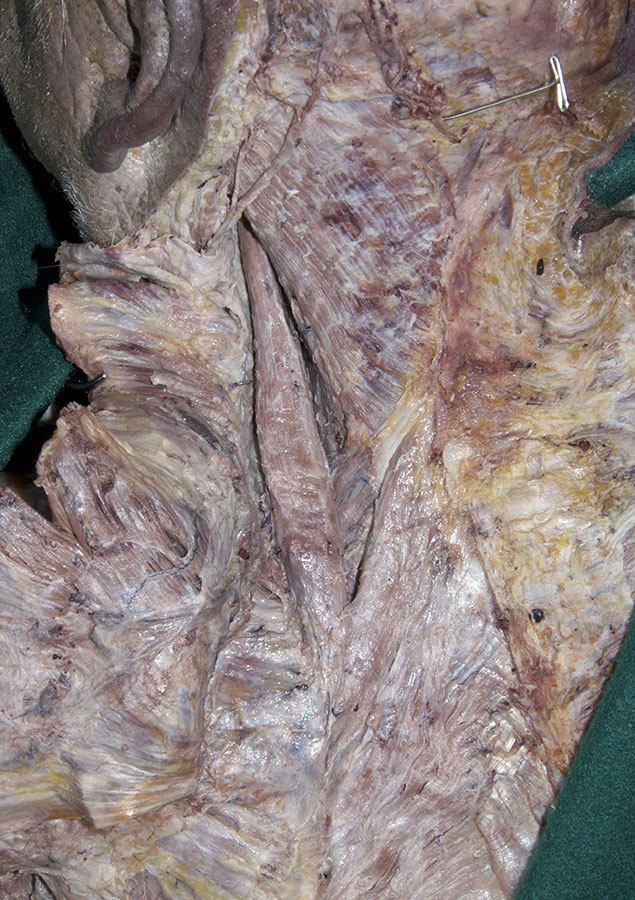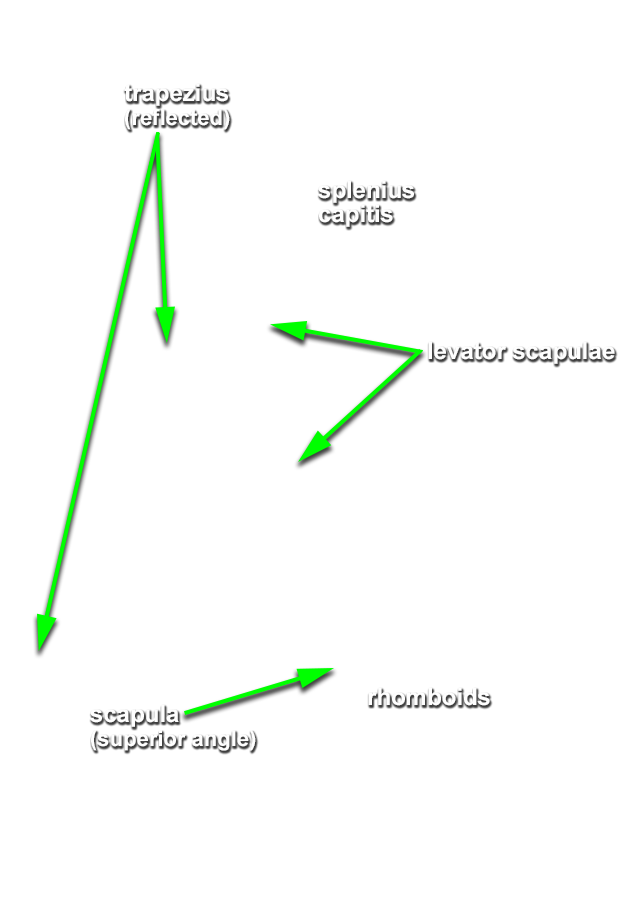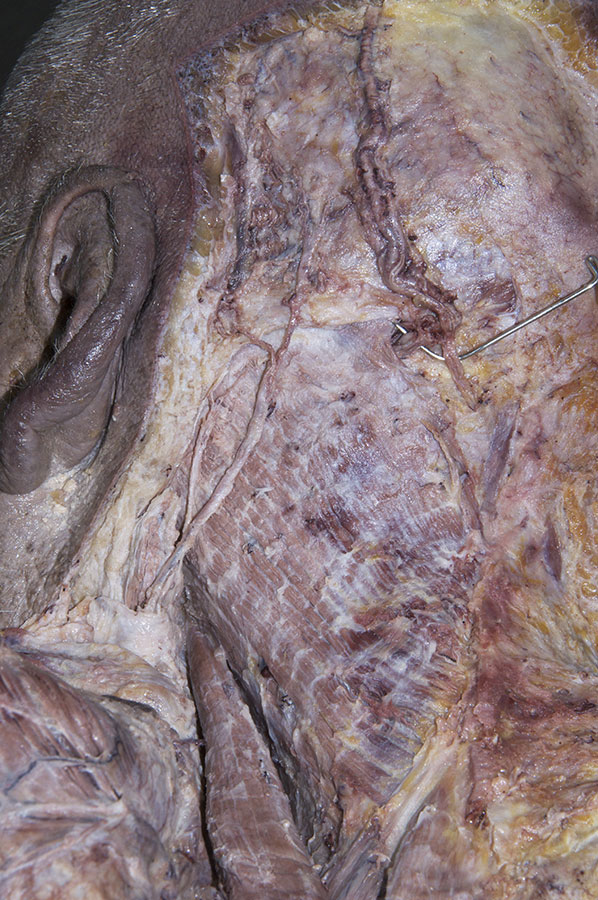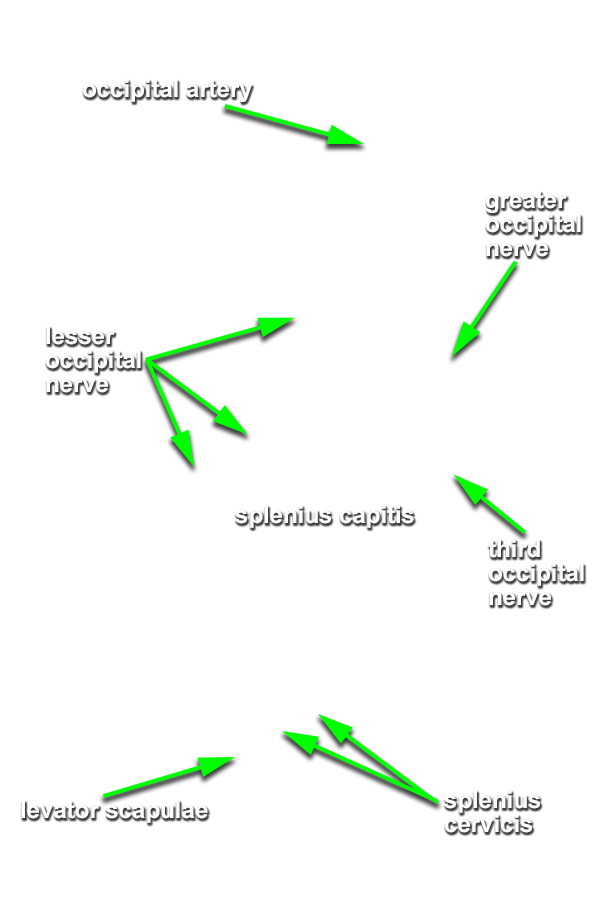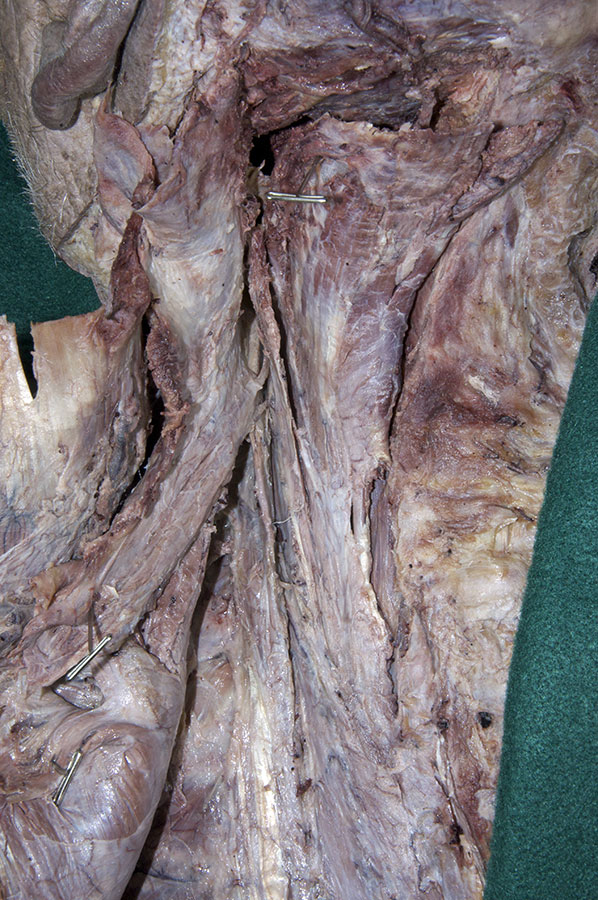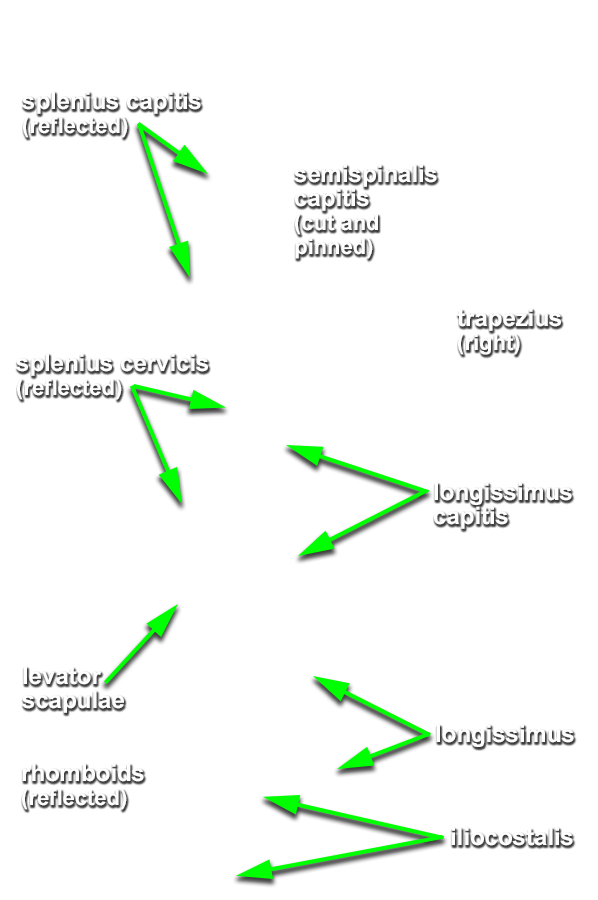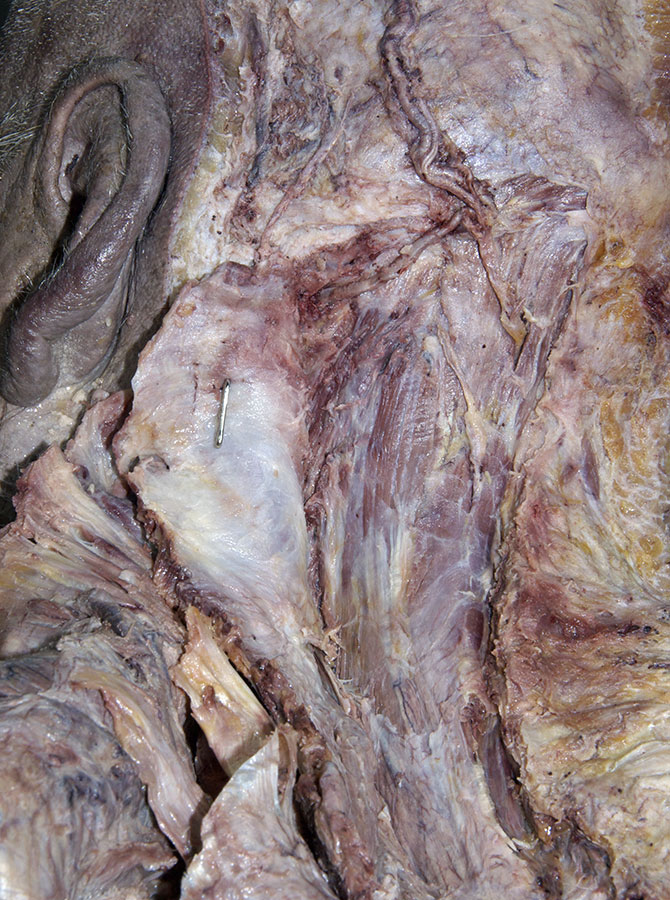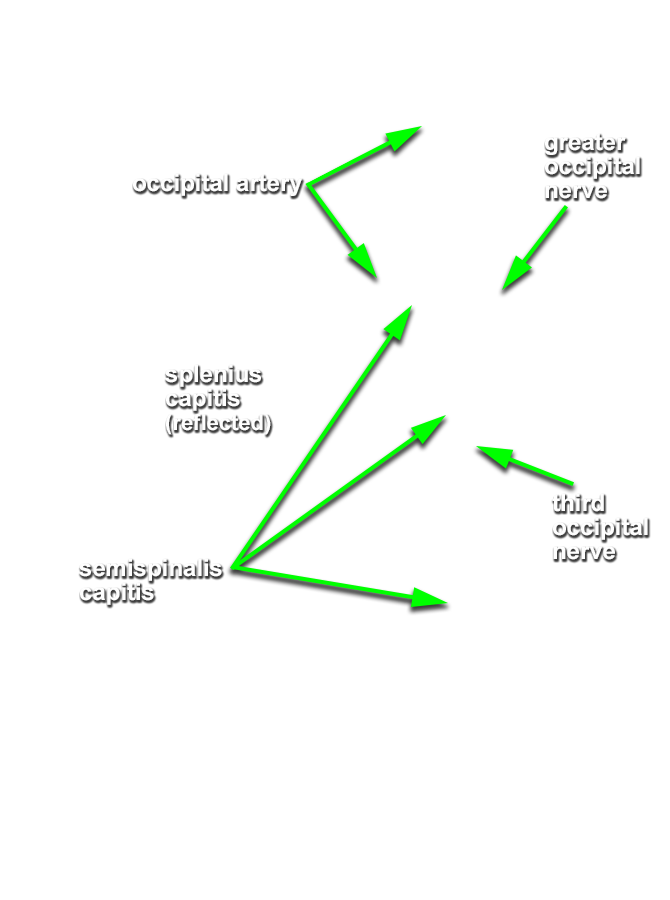(ON BOTH SIDES) Identify and reflect the muscles of the posterior neck.
- Blunt dissect under the trapezius muscle and detach the trapezius from the nuchal ligament and the occipital bone. Reflect the trapezius towards the clavicle. Leave the occipital artery and greater occipital nerve intact. Return (identify) to the levator scapulae muscle. Trace the slips of the levator scapulae in the superior direction to their attachments to the transverse processes of the upper cervical vertebrae. (G 1.25;N 174;Gl 25.27B)
-
(ON BOTH SIDES) Identify the
splenius capitis and
splenius cervicis muscles. (G 1.26;N 171;Gl 3.5B) Blunt dissect under the splenius muscle and carefully cut it from the nuchal ligaments and spinous processes. Laterally reflect the splenius muscle.
Important Relationship
- The splenius capitis muscle is positioned superficial to the semispinalis capitis muscle.
- The splenius cervicis muscle is positioned superficial to the longissimus capitis muscle.
- (ON BOTH SIDES) Identify the longissimus capitis and semispinalis capitis muscles. (G 1.27;N 172;Gl 3.3) Note the greater occipital nerve piercing (approximately 1 cm from the midline) the semispinalis muscle. You need to leave this nerve intact when you reflect the semispinalis muscle. Blunt dissect along the nerve where it pierces the muscle. Use your pointed scissors to blunt dissect or cut between the right and left semispinalis capitis muscles. If necessary, remove the nuchal ligament located between the two semispinalis capitis muscles. Blunt dissect under the semispinalis capitis muscle and free it from the underlying structures (there is a fatty fascial plane deep to this muscle). Cut the semispinalis capitis as close to the skull as is possible and reflect it in the inferior direction. As you reflect the semispinalis capitis, you may need to split the superior portion of the muscle into medial and lateral sections to avoid damaging the greater occipital nerve. (G 1.33A;N 175;Gl 45.37)
